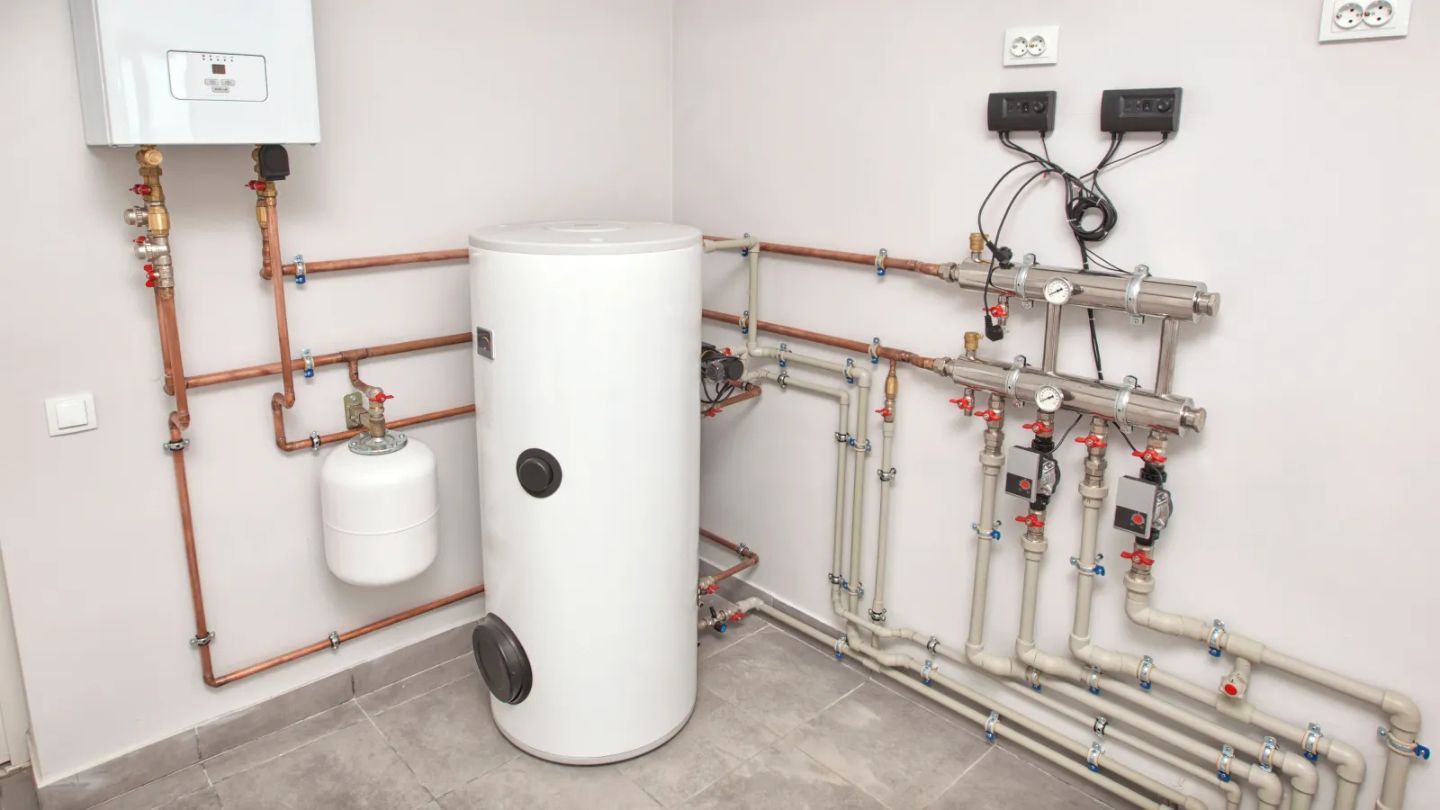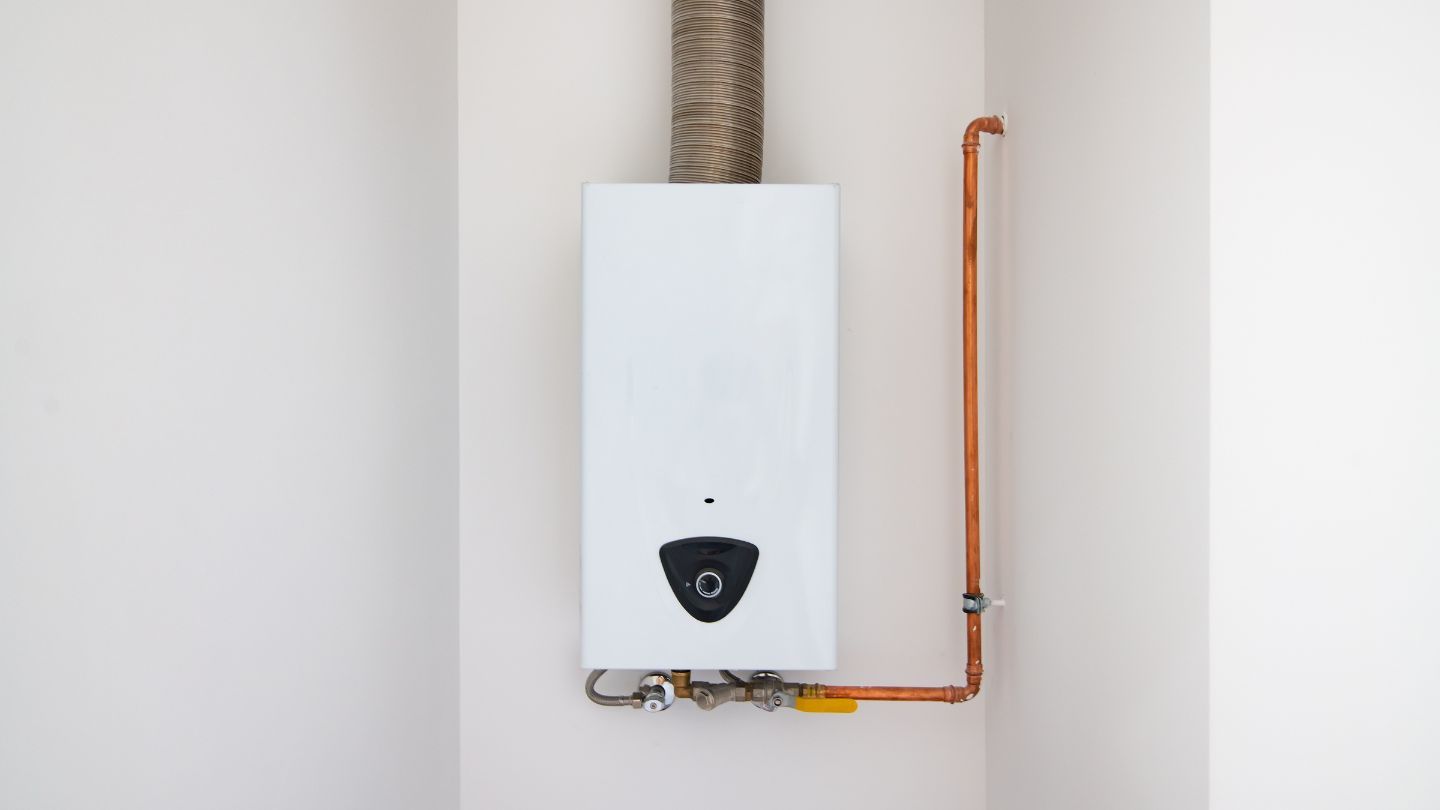Water heaters are a crucial
appliance in every household, supplying hot water for bathing, cooking,
cleaning, and more. While these units are generally reliable, understanding how
to safely turn on your water heater—whether it's a gas, electric, or tankless
model—can be helpful for any homeowner. This guide will provide detailed steps,
helpful tips, and essential safety precautions to help you operate your water
heater with confidence.
Key
Takeaways:
- Different types of water heaters, such as gas, electric, and tankless, have distinct start-up procedures.
- Following safety precautions, especially for gas heaters, is critical to avoid accidents.
- Regular maintenance, such as flushing the tank and inspecting the anode rod, is essential to extend the lifespan of your water heater.
- Setting your water heater thermostat to the recommended 120°F can improve energy efficiency and prevent scalding while ensuring optimal hot water supply.
Understanding
Your Water Heater
Knowing your water heater's
type and functionality is essential for proper operation. There are three
primary types of water heaters:
- Gas
Water Heaters:
These units rely on a burner powered by natural gas or liquid propane (LP) to
heat water. Gas water heaters are effective for households with high hot water
demand, but they require care when lighting the pilot and handling the gas
connections.
- Electric
Water Heaters:
Using electric heating elements, these models are generally easier to turn on
and manage. They are often more energy-efficient for small households and don't
require gas lines, making them a popular choice for those with smaller water
heating needs.
- Tankless
Water Heaters:
Offering instant hot water without the need for a storage tank, tankless water
heaters use powerful burners or heating elements to warm water on demand. This
design is energy-efficient and convenient, but it requires adequate water flow
to trigger the heating process.
In each type, crucial
components such as thermostats, anode rods, and temperature and pressure relief
(T&P) valves play important roles. Thermostats allow temperature
adjustments, with a recommended setting of around 120°F to balance comfort and
efficiency. Anode rods prevent corrosion in the tank, extending the unit's
life, while T&P valves are a safety measure to prevent excessive pressure
buildup.
Steps
to Turn On a Gas Water Heater

Turning on a gas water heater
involves several steps, requiring care to prevent gas leaks or other hazards.
Here's how to safely start your gas water heater:
- Confirm
the Gas Supply:
For natural gas heaters, ensure that the gas line is connected and turned on.
For propane heaters, make sure the propane tank is full and the gas valve is
open.
- Turn
the Gas Valve to "On":
Locate the gas shut-off valve on the water heater and turn it to the "on"
position. This valve controls the flow of gas to the burner, which heats the
water. Locate and open the pilot light access panel to expose the pilot light.
- Set
the Thermostat:
Adjust the thermostat to its lowest setting before ignition. This precaution
prevents sudden temperature surges and provides better control once the heater
is operational.
- Ignite
the Pilot Light:
To safely ignite the pilot light burner, consult your user manual. For models
with an automatic ignition, follow the prompts to start the pilot light. For
manual ignition, use a long lighter or match to light the pilot safely.
Remember, if the pilot light doesn't stay lit after a few tries, it may
indicate a problem with the gas supply or ignition system.
- Monitor
the Pilot Light:
Once lit, observe the pilot light to confirm it's burning steadily. A stable
pilot light indicates that the heater is ready for use. If it frequently goes
out, contact A-Total Plumbing for troubleshooting, as this may signal a more
complex issue that requires expert attention.
Troubleshooting and
Maintenance for Gas Water Heaters
Regular maintenance and
troubleshooting can help extend the lifespan of your gas water heater and
ensure it operates efficiently. Here are some tips to help you maintain and
troubleshoot your gas water heater:
- Inspect
the Pilot Light:
Regularly check the pilot light to ensure it's burning steadily. A flickering
or extinguished pilot light can indicate issues with the gas supply or the
thermocouple. If the pilot light goes out frequently, it may need cleaning or
replacement.
- Check
for Gas Leaks:
Periodically inspect the gas connections and pipes for leaks. A simple way to
do this is to apply a soapy water solution to the connections and look for
bubbles that indicate a leak. If you detect a gas leak, turn off the gas supply
immediately and contact a professional.
- Flush
the Tank: Sediment
buildup in the tank can reduce the efficiency of your gas water heater.
Flushing the tank annually helps remove these deposits. To do this, turn off
the gas supply and water, attach a hose to the drain valve, and let the water
flow out until it runs clear.
- Test
the Pressure Relief Valve:
The temperature and pressure relief (T&P) valve is a critical safety
feature. Test it by lifting the valve's lever and letting it snap back. If
water flows out and stops when you release the lever, it's working correctly.
If not, it may need replacement.
- Adjust
the Thermostat:
Ensure the thermostat is set to the desired temperature, typically around
120°F. This setting helps prevent scalding and reduces energy consumption. If
the water temperature fluctuates, the thermostat may need calibration or
replacement.
- Inspect
the Anode Rod: The
anode rod helps prevent tank corrosion. Check it annually and replace it if
it's significantly corroded. A healthy anode rod can extend the life of your
water heater.
By following these maintenance
tips, you can keep your gas water heater running smoothly and efficiently.
Steps
to Turn On an Electric Water Heater
Electric water heaters have a
simpler activation process than gas models. However, they also have specific
steps that ensure proper functioning:
- Check
the Circuit Breaker:
First, ensure that the circuit breaker connected to the water heater is in the
"on" position. This powers the heating elements inside the unit.
- Inspect
Indicator Lights:
Many electric water heaters feature indicator lights to show power status.
These lights can confirm that the heater is receiving electricity and is ready
to heat water.
- Set
Your Temperature:
Using the thermostat on the water heater, set your desired temperature. Most
homeowners find that 120°F provides sufficient comfort while being
energy-efficient.
- Wait
for Heating: If
the heater has been off for some time, it may take a while to heat the water to
the selected temperature. Give the unit time to reach its set temperature, as
electric elements may take longer than gas burners.
Using
a Tankless Water Heater

Tankless water heaters offer
the convenience of immediate hot water and energy savings, as they only heat
water on demand. Here's how to activate your tankless water heater effectively:
- Power
On: Locate the
main power switch and turn the unit on. In some homes, this switch may be near
the heater itself, while in others, it may be located in a control panel.
- Check
Water Flow: Ensure
adequate water flow by turning on a hot water faucet. Tankless units rely on
water flow sensors to activate heating. Without sufficient flow, the heater may
not turn on.
- Adjust
Temperature: Set
the temperature to your preferred level, typically around 120°F. Tankless
heaters offer precision temperature control, allowing you to avoid excessively
high temperatures and reduce the risk of scalding.
Safety
Tips for Water Heater Use
Operating a water heater
involves handling electricity, gas, and high temperatures. To ensure safety,
follow these precautions:
- Check
for Gas Odors: If
you smell gas around your water heater, do not attempt to light the pilot or
adjust the gas valve. Instead, ventilate the area and call a professional
immediately. Carbon monoxide, a byproduct of gas water heaters, can be
dangerous if improperly vented.
- Inspect
Connections and Pipes Regularly:
For gas models, check all connections and flexible pipes for potential gas
leaks, and keep flammable items away from the heater to minimize fire hazards.
- Disconnect
Power for Electric Heaters:
When performing maintenance on an electric water heater, always disconnect the
power to prevent electrical hazards.
- Schedule
Regular Inspections:
Routine inspections are key to preventing accidents and extending the life of
your water heater. A-Total Plumbing's team offers comprehensive maintenance
checks to help identify and resolve issues before they escalate.
By observing these safety
measures, you can ensure that your water heater operates safely and
effectively. For any issues or concerns, A-Total Plumbing is ready to assist
with 24/7 emergency service and a lifetime warranty on all work.
Read more: How to Extend the Life of Your Tankless Water Heater
Summary
Understanding how to turn on
and maintain your water heater—whether gas, electric, or tankless—ensures
reliable access to hot water while prioritizing safety and efficiency. By
following the outlined steps and safety tips, homeowners can confidently manage
their water heaters.
At A-Total
Plumbing, we are
committed to providing top-tier plumbing services, including expert maintenance
and installation for all types of water heaters. Whether you're dealing with a
traditional gas or electric model or need assistance with a tankless water heater for Kennesaw, GA, our experienced team is ready to help.
Contact us today to schedule a service or
consultation and ensure your water heater is running efficiently and safely.
Frequently Asked Questions
What
should I do if my gas water heater pilot light won't stay lit?
If the pilot light doesn't stay
lit, it may be an issue with the thermocouple or gas supply. Try relighting it,
but if the problem persists, it's best to contact a professional for
inspection.
How
often should I flush my water heater?
Flushing your water heater once
a year helps prevent sediment buildup, which can reduce efficiency. A-Total
Plumbing offers water heater maintenance services, including flushing, to keep
your unit running smoothly.
Why
is my electric water heater not heating water?
Check if the circuit breaker is
on and that indicator lights show power. If the problem continues, it might be
a heating element issue, which requires professional inspection or replacement.
Can
I turn my water heater off when I go on vacation?
Yes, turning it off or setting
it to a vacation mode can save energy. For tankless models, consider shutting
off the power and water supply. Consult your manual for recommendations.
What
temperature should I set my water heater to?
The recommended setting for
most homes is 120°F. This provides hot water efficiently while reducing the
risk of scalding and saving on energy costs.

